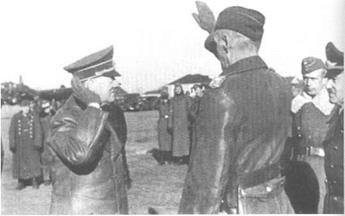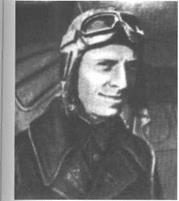Encirclement in the Ukraine
Unremitting Luftwaffe raids against the Soviet retrograde rail movements in the Ukraine played an increasingly sinister role, seriously disrupting the Soviet supply lines. On July 16 the combat situation took a dramatic turn as Panzergruppe 1 captured Biylaya Tserkov, southwest of Kiev, and started turning toward the south, where the German Eleventh Army captured the Moldavian capital, Kishinev, on the same day. Suddenly a large-scale encirclement battle began to take form in the Vinnitsa – Uman area in west-central Ukraine. General-Polkovnik Kirponos, commander of the Southwestern Front, urgently phoned General-Leytenant Astakhov, the commander of the front’s aviation: “Take all you’ve got and throw it against the tank columns in the Biylaya Tserkov area and northeast of Kazatin! Keep on attacking! This is your main task!”
The next day, the bulk of Astakhov’s bombers and ground-attack aircraft were airborne against this threat. A shift in the weather, which had brought heavy low pressure with low clouds and rain showers, prevented the German fighters from interfering effectively.
Although considerable damage was wrought upon the German armored columns by the attacking Soviet airplanes, the drive by Panzergruppe 1 could not be halted.
In the South, the situation was different. General Shclukin’s units of VVS-Southern Front were in disarray due to losses and disorder in the ground organization due to the retreat from Moldavia. The German Eleventh Army reached the Dniester River at Mogilev Podolskiy, on Moldavia’s northern frontier with the Ukraine, almost without interference from the Soviet
|
|
Adol* Hiller Gene-al euhar Kurt 3fli, gbei and Genera cbers: Alexander Lohr during =r inspect on of KG 27 Eoelcke <url РЛидЬе Гао neera combat pilot during World War I. In the late 1920s he underwent secret training at Lipetsk in the USSR. He led Fliegerkorps IV of Luftflotte 4 between 1940 and 1943 and ended the war as commander-in-chief of Luftflotte 1. Pflugbeil died on May 31,1955. Bom in Croatia, Alexander Lohr served with the Austro-Hungarian General Staff during World War I. He commanded Luftflotte 4 during the invasions of Poland, Yugoslavia. Greece, and the Soviet Union. On April 6,1941, he led the extensive Luftwaffe raid against Belgrade, Operation Punishment. The end of the war saw him in chargeof Army Group E in the Balkans, where he fought side by side with his fellow countrymen of the notorious Croatian Ustasha. After the war, Lohr was put on trial by Yugoslavia and executed on February 16,1947. (Photo: Roba.)
Air Force. While the Stukas of StG 77 held the defenders down, the German troops were able to cross the river on July 17.
Adverse weather conditions limited aerial combat during the following days, but on July 20 three 1-153 Chaykas led by 66 ShAP’s Politruk Petr Bityutskiy, returning from a strafing mission, were bounced by three Bf 109s. One 1-153 was hit and the third Chayka pilot made a quick escape. Petr Bityutskiy barely survived the ensuing combat, but he finally managed to shoot down one Bf 109. His opponents in this engagement probably were from Major von Maltzahn’s Stabsschwarm of JG 53, which came out with three victory claims, including von Maltzahn’s fortieth, after an attack against Soviet aircraft strafing German troops.
A surprise attack on July 21 by eight DB-3s against the large Moldavian air base at Beltsy—previously occupied by 55 1AP—put fourteen German aircraft out of commission, including eleven Ju 87s of StG 77. The next day, the notorious SD leader Reinhard Heydrich was shot down and force-landed in Moldavia. Heydrich had volunteered to fly a couple of combat missions against the Soviets together with I1./JG 77. Following this unpleasant experience, Heydrich made a quick return to safety in his headquarters in Germany.
On July 24, JG 77 met 55 1AP on at least two occasions. Shortly after 0600, a Bf 109 Rotte escorting an Hs 126 reconnaissance plane in the Beltsy sector were intercepted by two MiG-3s. Following a stiff dogfight, Oberleutnant Erich Friedrich shot down and killed Mladshiy Leytenant Leonid Diyachenko and drew off his section leader. A few hours later, another Rotte of I1./JG 77 ran into nine Su-2s that attempted to dive – bomb the Dniester crossings at Mogilev Podolskiy,
According to Soviet sources, two Su-2s were shot down over the German lines. Nevertheless, one of the Su-2 pilots succeeded in making a makeshift repair of his aircraft and took off from a field and returned to base. The Bf 109s became involved in a stiff dogfight with the dive-bombers’ escort, two I-16s and four MiG-3s— the latter from Il./JG 77’s old acquaintance 55 IAP. Leutnant Siegfried Freytag claimed an 1-16 (a loss that is confirmed by Soviet reports), while Starshiy Leytenant Aleksandr Pokryshkin’s MiG-3 was severely damaged by antiaircraft fire. The Soviet ace nevertheless was able to bring his damaged airplane back to make a forced landing in Kotovsk. This was the second time in a few days that Pokryshkin had been brought down by enemy fire. The first time, he had crashed in enepiy-held territory but managed to reach Soviet lines after a day’s and a night’s running.
The next day, it was JG 77’s time to suffer at the hands of attacking 55 IAP. While strafing the Soviet fighter unit’s base at Mayaki, Oberfeldwebel Friedrich Blaurock’s Bf 109 was hit by antiaircraft fire and crashed on the runway. Aleksandr Pokryshkin gives the following account of the crash site: “The cockpit was totally squeezed together. An Iron Cross was pinned on the chest of the dead pilot. According to the markings on the rudder of the plane, he had shot down six aircraft and sunk two ships.”21
In rain and low’ clouds, the bombers of Luftflotte 4 maintained their continuous interdiction operations against the Soviet railway system in the area. Generaloberst Alexander Lohr, the commander of Luftflotte 4, had decided to concentrate the bulk of his air units to sever the Soviet rear communication lines leading to and from the Uman area. On July 25 Marshal Budyonny sent the Stavka a dejected wire: “All efforts to withdraw the Sixth and Twelfth armies to the east and to the northeast are fruitless.” The ring had closed around the Soviet armies in the Uman area. The next encirclement battle took place.
As this happened, the skies cleared, once again setting free the full fury of the Bf 109 fighters. The results for July 26 are symptomatic of this stage of the war. While the fighters of JG 3, Stab, and 1./JG 53 and JG 77 daimed forty-nine victories, Luftflotte 4 recorded eleven of its own aircraft shot down.
During these days, the Romanians became acquainted with a completely new Soviet bombing tactic, the Zveno method. Zveno was a Tupolev TB-3 heavy bomber carrying two 1-16 fighters, each loaded with two 250-kilogram FAB bombs. The 1-16s were released at high altitude between ten and thirty miles from the target to carry out a high-speed diving attack. Since they were much smaller and faster than conventional bombers, the 1-16s could strike with surprise and evade enemy AAA fire and fighters. Having effected the attack, the I – 16s returned home on their own.
The original idea of the Zveno tactic came from designer Vladimir Vakhmistrov. At first it was intended that the two fighters carried by a TB-3 would be launched to ward off attacks—a flying aircraft carrier in effect. This proved impracticable but gave birth to the concept of a “piggyback” dive-bomber. Six 1-16s were modified for dive – bombing and redesignated I-16SPB. A special unit was set up with these aircraft, the 2 Eskadrilya of 32 ІАР/ ChF. Together with three TB-3s converted for the new role, the planes were based at Yevpatoria in the Crimea early in the war, and training commenced immediately.
The first Zveno raid was carried out on July 26,1941. Two TB-3s released four I-16SPBs led by Kapitan Arseniy Shubikov about thirty miles from the Romanian coast. Two of the fighter-bombers attacked oil plants near Constanta, while the other two raided the floating docks in the harbor. Despite being intercepted by the Bf-109s of Ill./JG 52, all the Soviet aircraft successfully returned to base.
While the bulk of Army Group South was involved in the Battle of Uman in the South, the German Sixth Army was given the task of advancing from the west toward Kiev. More or less leaving the skies above the Uman area to the Luftwaffe, the supreme commander of VVS-Southwestern Zone, General-Mayor Falaleyev, directed the main efforts of VVS-Southwestern Front against the German Sixth Army approaching Kiev. VVS – Southern Front was concentrated around the Dnieper bend to the south.
The chief of staff of Fliegerkorps V, Oberst Hermann Plocher, recalls that the lack of fighter cover for the Sixth Army in the Kiev sector in these days caused discord between the Sixth Army and Fliegerkorps V’. “The Russians were extremely active in the air,” wrote Plocher. “Their efforts to concentrate air power in the area was clearly noticeable.”22 Finally, Generaloberst Lohr decided to provide the Sixth Army with a provisional groupment of Luftwaffe units—Nahkampffiihrer Nord.

Led by the Geschwaderkommodore of JG 3, Major Gunther Liitzow, Nahkampffuhrer Nord was comprised of IlI./StG 77,1. and 1IL/JG 3, Stab, and L/JG 53. Here, Soviet aces such as Politruk Petr Bityutskiy, Leytenant Aleksey Artamonov, and Leytenant Vasiliy Demyenok were violently confronted with German top guns such as Oberleutnant Kurt Sochatzy of 11I./JG 3 and the Geschwaderkommodoren of JG 3 and JG 53, Major Gunther Liitzow and Major Gunther Freiherr von Maltzahn.
“Franzl” Liitzow and “Henri” von Maltzahn were among the most famous personalities in the German fighter arm. During the Battle of Britain, they had developed as great leaders. They were of similar character, but Kurt Sochatzy was more of a fighter. Twice shot down over Soviet territory, he had managed to return both times. Since the outbreak of hostilities with the Soviet Union, Oberleutnant Sochatzy increased his victory score from one to thirty-eight.
On July 28, Politruk Petr Bityutskiy of 66 ShAP
found himself attacked by three Bf 109s. This time he was himself shot down, but not before having claimed one Bf 109 destroyed and one that crashed into the ground while pursuing his damaged fighter-bomber at treetop level. Possibly these losses are included in the July 29 loss report of I1I./JG 3, which listed three Bf 109s lost in air combat and no more than three victories. On that day, a flight of three Soviet fighters from 168 IAP/45 SAD, led by Leytenant Aleksey Artamonov, attacked sixteen “Junkers bombers.” Leytenant Artamonov claimed two shot down, while his wingman destroyed a third. Meanwhile, Major von Maltzahn, at the head of JG 53, achieved his forty-fifth victory by downing an SB bomber.
The next day, IIl./StG 77 launched a pinpoint attack against Marshal Semyon Timoshenko’s living quarters in Kiev. The Stukas ran into strong and well-aimed antiaircraft fire that hit one of the four escorting Bf 109s, On the return flight, Major von Maltzahn reported the destruction of two Soviet bombers.
|
|
[ Kapiton Arseniy Shubikov is wearing the leather coat of World War I I inspiration, which was common in the VVS in 1941. Serving with 32ІАР/ f. ChF, Shubikov was one of the most outstanding fighter pilots of the Black
I Sea Fleet’s WS. A few months before the German invasion he was instructed to form the first Zveno unit, which he led with considerable I success during the first months of the 1941 war. He was killed in October
[ 1941 in combat with one of the aces of JG 77 Herzas. (Photo: Denisov.)
On August 1, 1941, six Pe-2s of 40 ВАР/ChF I undertook a swift attack against the harbor and rail mar – I shaling yards of Constanta. The ship Amarilis was sunk I and the Durostor was damaged, six train cars were damaged, six people on the ground were killed, and four were injured.
On August 2 the next Zveno mission was launched I by three ТВ-3s with six M6SPBs. This time Bf 109s I bounced the TB-3s before they had released the fighter – I bombers. The fighter-bombers were jettisoned, and the heavy bombers turned away from a hopeless encounter. The German fighters concentrated on the 1-16s. Later, four 1-16 pilots landed at Odessa Airdrome. Two of their I comrades had fallen victim to the Messerschmitts.
I On August 3, 63 BAB and 2 Eskadrilya/32 1AP r dispatched the third Zveno mission from Odessa Air-
jj drome: An escort of two MBR-2 flying boats was
. furnished the two TB-3s. Released ten miles from the target, the fighter-bombers spread out and struck an oil
Black Cross / Red Star
refinery, an oil storage depot, harbor installations in Constanta, and a hydroplane base on the Black Sea coast. All Soviet planes returned home. Thirty-two Soviet medium bombers that flew against the same target on that day fared worse. They ran into the entire l.(J)/LG 2, which claimed eleven shot down without any losses. The Gruppenkommandeur, Hauptmann Herbert Lhlefeld, single-handedly knocked down six, bringing his victory tally to fifty-three.
In the air over Kiev, Oberleutnant Kurt Sochatzy of III./JG 3 was brought down through a taran on August 3 and was captured by the Soviets. Having achieved thirty – seven aerial victories, plus a further twenty-seven aircraft destroyed on the ground, on 150 sorties since June 22,1941, Sochatzy was among the most successful pilots in 1L1./JG 3 at that time. Since no taran is registered in Soviet sources on this date, it may be assumed that Sochatzy was knocked down by 168 IAP’s Leytenant Artamonov, who was reportedly killed in a taran in the same area on July 30.25
At the beginning of August, Stab and L/JG 53 were withdrawn from the Eastern Front and transferred to Germany. They were replaced by 1II./JG 52, which was released from its duty of providing the Romanian oil fields with air cover.
On August 7 the Soviets launched a surprise attack in the Kanev area, to the north of the German troops advancing southward toward Uman. Encountering only weak German forces, the Soviets made a rapid advance and threatened the entire operation against Uman. At this point General Robert Ritter von Greim took the initiative to launch every aircraft available in his Fliegerkorps V against the Soviet attack force. Despite adverse weather conditions of rain showers and a cloud ceiling of less than 250 feet, von Greim’s units achieved excellent results in ‘foiling attacks.” While the Ju 87s of StG 77 severed the Soviet supply lines by blowing up the bridges at Kanev, the bombers of KG 51, KG 54, and KG 55 reportedly destroyed 148 motor vehicles and 48 tanks in the Kanev area between August 7 and 9, bringing the offensive to a halt. Fighting in the skies above this battlefield, III./JG 52 scored its hundredth victory’ on August 7. One of the main contributors to this success was 9./JG 52’s Oberleutnant Werner Fernsebner, a veteran of earlier campaigns. Having achieved his fifteenth victory, he was shot down and killed over the Dneiper on August 9.
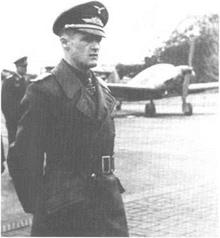

Meanwhile, the units of Fliegerkorps IV carried out systematic attacks to help annihilate the encircled Soviet Sixth and Twelfth armies in the so-called Uman Pocket. “Rolling aerial attacks” against Soviet troops attempting to escape the encirclement provided vital preconditions for the destruction of the entrapped forces. On August 10 alone, the bombers of Luftflotte 4 reported the destruction of 300 Soviet trucks and 54 tanks. During the battle of encirclement, Fliegerkorps V claimed to have destroyed 420 motor vehicles, 58 tanks, and 22 artillery batteries.
On August 11, Major Gunther Lutzow’s JG 3 claimed
thirty-six victories but lost seven Bf 109s in aerial combat. 66 SliAP’s Politruk Petr Bityutskiy sacrified his life to bring down one of them.
The Battle of Uman came to a cruel end in which 103,000 Red Army soldiers : ended up in German confinement. It had displayed, for the first time in history,] the ability of a superior air force to com-: pletely “surround an army from the air.9 The intensive aerial bombardment had brought virtually all major Soviet troop; movements to the west of the Dnieper River to a halt. At the same time, the Bf 109s had made huge claims in air combat. But the large successes had not been achieved without encountering hard opposition and relatively high losses oi the German side as well.
In the Kanev sector the Soviets started retreating across the Dnieper oi August 13. StG 77 was called on to carry out unbroken dive-bombing raids against the Kanev bridges, where it met stiff S» viet fighter opposition. While covering | the Stukas, Major Gunther Liitzow, the commander of JG 3, shot down two 1-16s, killing Mladshiy Leytenant Ivan Novikov of 88 IAP,vho had survived a taran on July 23.
On August 14, I./JG 3 tangled with a formation of very skillfully piloted 1-16s over one of the Dnieper bridges Kanev south of Kiev. Hauptmann Hans von Hahn recalled: “All previous air combat had been a children’s game compared to what w encountered above the Dnieper bridge at Kanev. We mt six Ratas. . . . Before you had even started thinking of attacking them, the Russian pilots quickly turned around and met us head-on, shooting and laughing cold-; bloodedly.”
Hauptmann von Hahn’s opponent in this combat was 88 IAP, which included the eight-victory ace Leytenant Vasiliy Demyenok. I./JG 3 claimed three I-16s in this melee—of which 88 IAP actually recorded two lost—against two Bf 109s shot down. The Staffelkapitan of 1. Staffel, thirty-five-victory ace and
|
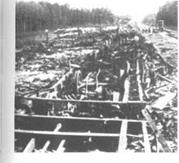 Air raids against Soviet lines of supply played a significant role in German successes in the Ukraine during the summer and early fall of 1941. According to Oberst Hermann Plocher of Fliegerkorps V, some one thousand railroad cars, many of them waiting in stations and loaded with ammunition, were destroyed during the Luftwaffe’s railroad interdiction operations east of Dneiper River. The to the left photo shows the meager remnants a Soviet ammunition train that was destroyed by German bombers during the summer of 1941. (Photo: Baeker.)
Air raids against Soviet lines of supply played a significant role in German successes in the Ukraine during the summer and early fall of 1941. According to Oberst Hermann Plocher of Fliegerkorps V, some one thousand railroad cars, many of them waiting in stations and loaded with ammunition, were destroyed during the Luftwaffe’s railroad interdiction operations east of Dneiper River. The to the left photo shows the meager remnants a Soviet ammunition train that was destroyed by German bombers during the summer of 1941. (Photo: Baeker.)
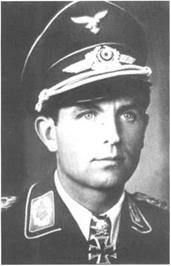 Herbert Ihlefeld scored his first nine victories with the Condor Legion in Spain, and he was already one of the most successful German fighter pilots as he led l.(J)/LG 2 against the Soviet Union. From June 1941 to July 1942, Ihlefeld was one of the deadliest opponents to the aviators of VVS – Southem Front and VVS-ChF. He then served as Geschwaderkommodore in the Air Defense of Germany and ended the war commanding the first He 162 jet fighter unit. By then, he had amassed a total score of 132 victories. (Photo: Salomonson.)
Herbert Ihlefeld scored his first nine victories with the Condor Legion in Spain, and he was already one of the most successful German fighter pilots as he led l.(J)/LG 2 against the Soviet Union. From June 1941 to July 1942, Ihlefeld was one of the deadliest opponents to the aviators of VVS – Southem Front and VVS-ChF. He then served as Geschwaderkommodore in the Air Defense of Germany and ended the war commanding the first He 162 jet fighter unit. By then, he had amassed a total score of 132 victories. (Photo: Salomonson.)
According to Soviet archival material. VVS-South – em Front registered 204 aircraft—including 113 during combat missions (eight of those due to AAA)-as “total losses" between July 1 and August 1, 1941/24 Other Soviet aviation commands operating in the same combat zone as JG 77 included VVS-ChF and units of the DBA. Thus the rate of overclaiming by the pilots of JG 77 appears to have been very limited during this period. On the other hand, the victory claims by WS-Southern Front
during the same period, 154, exceeded reality by two or three to one.
The combat strengths of VVS and Luftwaffe units і were in a steady decline. On August 1 the number of 1 operational aircraft in VVS-Southern Front had dropped ; from 671 a month previously to 258.23 Meanwhile, most j units in Luftflottc 4 were down to one-third or less of j their original strength.











